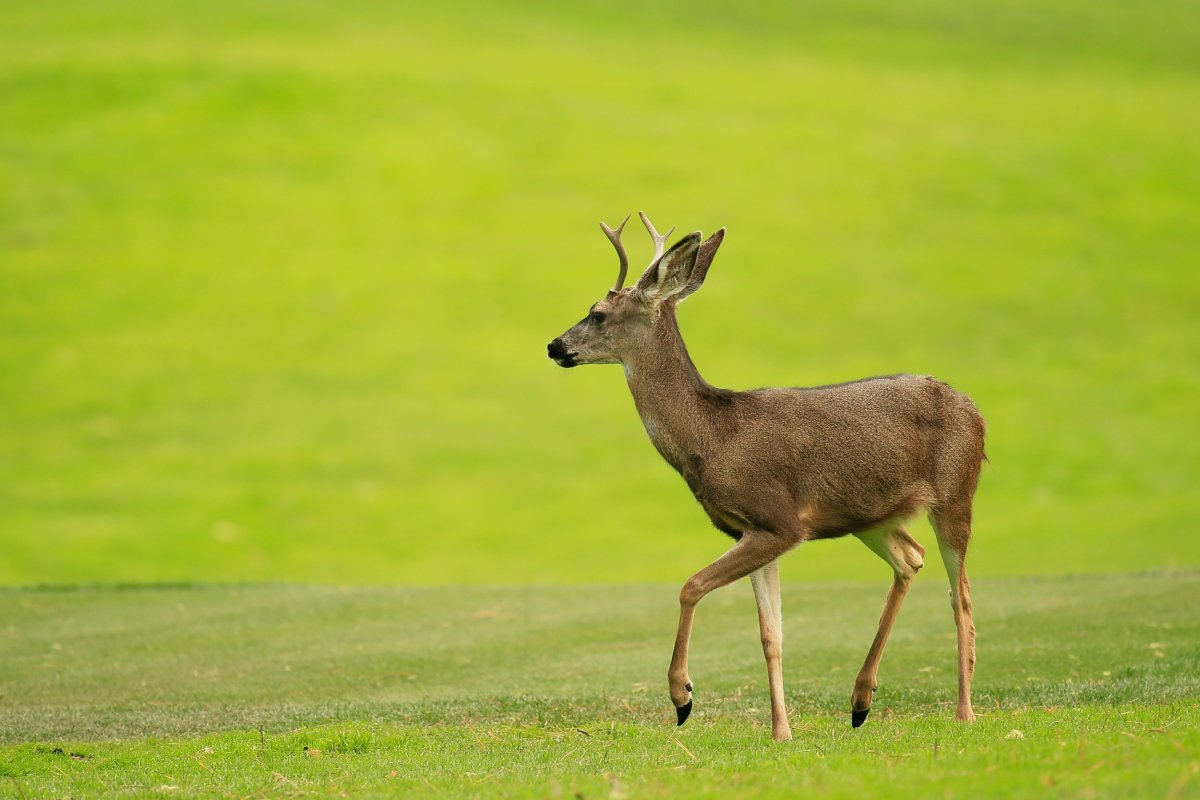Recently, there has been a flurry of reports about the spread of so-called zombie deer disease across the United States. But what exactly is it and could it spread to humans?
What Is Zombie Deer Disease?
The term has been used to describe chronic wasting disease (CWD), a neurodegenerative disorder that affects deer, elk, reindeer, sika deer and moose, according to the Centers for Disease Control and Prevention (CDC.)
CWD is thought to be caused by mysterious infectious pathogens known as abnormal "prion" proteins. These damage normal prion proteins that are mostly found in the brain and spinal cord, resulting in diseases that usually progress quickly after the onset of symptoms and are always fatal.
In the case of CWD, the protein damage causes holes to develop in the brain of the infected animal, leading to symptoms that may include drastic weight loss (wasting,) stumbling, listlessness, drooling, a lack of fear and aggression.
These characteristics are why CWD has earned the moniker zombie deer disease, with the myth-like suggestion that once they contract it, deer turn into a ghoulish parody of their once healthy selves. However, it is important to note that infected animals may appear perfectly healthy, because symptoms usually don't appear for months or even years.
Furthermore, infected animals often don't even make it to the last stage of the disease, where the most severe symptoms become apparent, Lindsay Thomas Jr. of the Quality Deer Management Association told USA Today. Unfortunately, there are no treatments or vaccines for CWD.
Where Have Cases of CWD Been Reported?
CWD is nothing new, according to the CDC. The disease was first identified in captive deer in the late 1960s in Colorado and in wild deer in 1981. Over the following two decades, cases of CWD were reported in the surrounding areas, and, as of January 2019, the disease has been documented in 24 states across the continental United States among free-ranging animals.
Most of these cases have been in Western and Midwestern states, although some have been reported in Texas and New York state, as well as two Canadian provinces, CDC data shows. In addition, CDW has been documented in reindeer and moose as far away as Norway, Finland and South Korea.
Overall, infection rates in animals across the United States remain low, However, the disease can prove to be very persistent in areas where it has established itself, and the CDC predicts that it is likely to spread further. Research has identified wild animal populations with infection rates as high as one in four.
How Does the Disease Spread, and Could It Affect Humans?
Scientists think that the abnormal prions are responsible for causing CWD to spread between animals through either direct or indirect (contaminated food, soil or water) contact with bodily fluids, such as feces, saliva, blood or urine. Once an animal becomes infected, the disease tends to spread quickly within a population. Furthermore, the prions can remain in the environment for a long time while still being infectious. This means that an animal could contract CWD from the dead body of another that died as a result of the disease.
To date, no cases of CWD have been reported in humans. But scientists have shown that monkeys that were given infected deer meat or bodily tissue to eat did contract CWD. Despite the results of this research, the CDC stresses that there is no strong evidence that CWD can be transmitted to humans, or even if it is possible for us to become infected with CWD prions.
"Nevertheless, these experimental studies raise the concern that CWD may pose a risk to people and suggest that it is important to prevent human exposures to CWD," the CDC said.
Michael Osterholm, director of the Center for Infectious Disease Research and Policy at the University of Minnesota, warned that CWD should be treated with the utmost caution. He said that the risks to humans could be very real, given our lack of knowledge.
"We are in an unknown territory situation," he told USA Today. "It is probable that human cases of chronic wasting disease associated with consumption of contaminated meat will be documented in the years ahead. It's possible the number of human cases will be substantial and will not be isolated events."
Osterholm compared CWD to "mad cow disease"—another prion disease, which caused the deaths of more than 150 people throughout the 1980s and '90s in the U.K., despite the fact that many initially doubted it could spread to humans.
What Precautions Can People Take?
If CWD could cause disease in humans, the most likely route of infection would be through eating infected deer or elk meat. According to the Alliance for Public Wildlife, between 7,000 and 15,000 animals infected with CWD are eaten every year, with that figure set to rise, USA Today reported.
The CDC recommends that hunters should not shoot, handle or eat meat from deer or elk that look sick or are acting strangely. If you do decide to eat the meat, get it tested before doing so, the CDC said.

Uncommon Knowledge
Newsweek is committed to challenging conventional wisdom and finding connections in the search for common ground.
Newsweek is committed to challenging conventional wisdom and finding connections in the search for common ground.
About the writer
Aristos is a Newsweek science reporter with the London, U.K., bureau. He reports on science and health topics, including; animal, ... Read more
To read how Newsweek uses AI as a newsroom tool, Click here.








